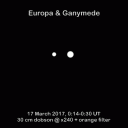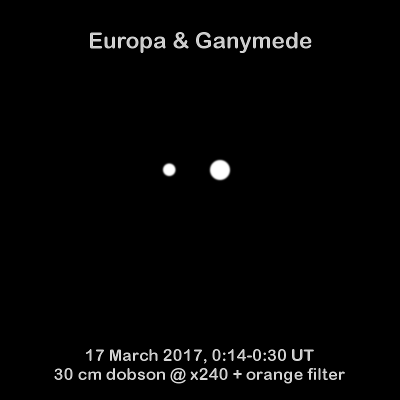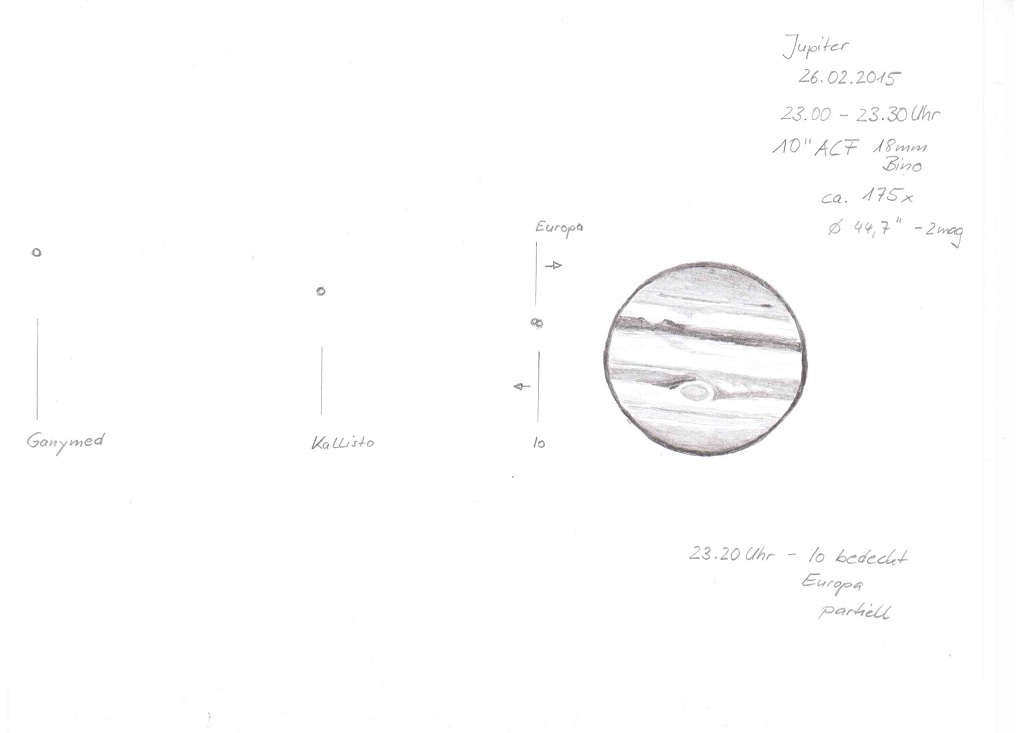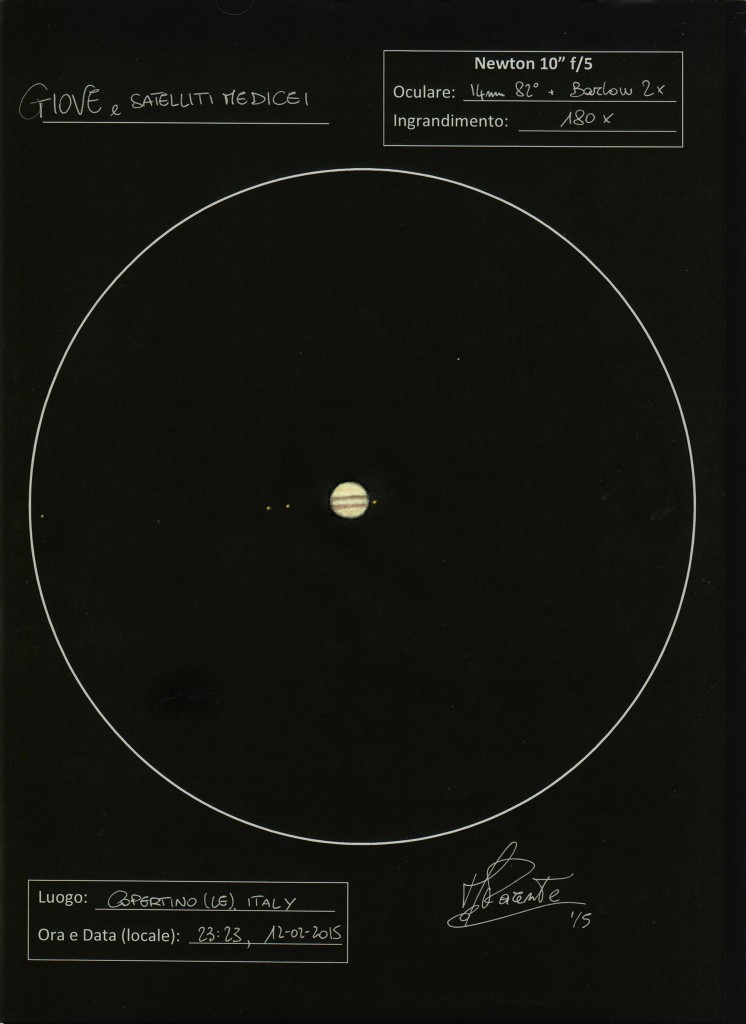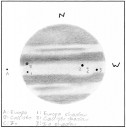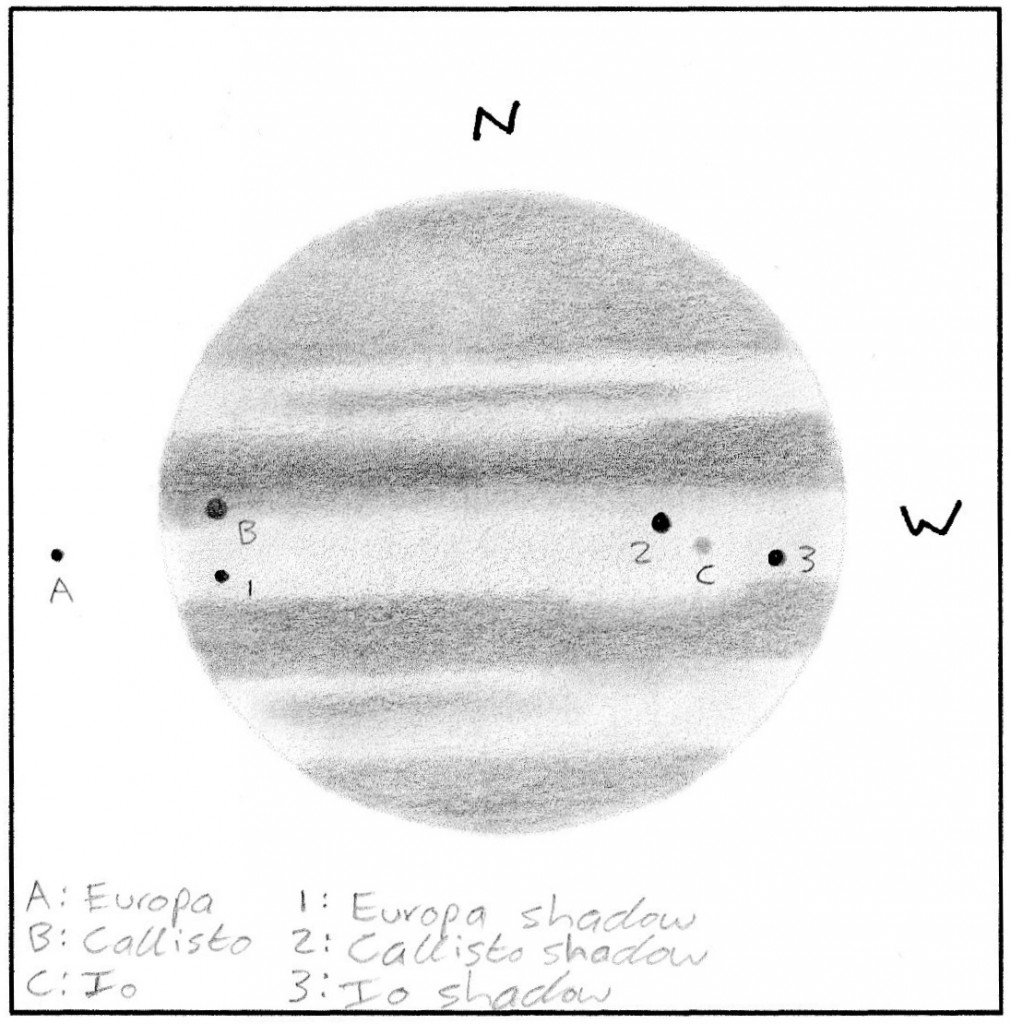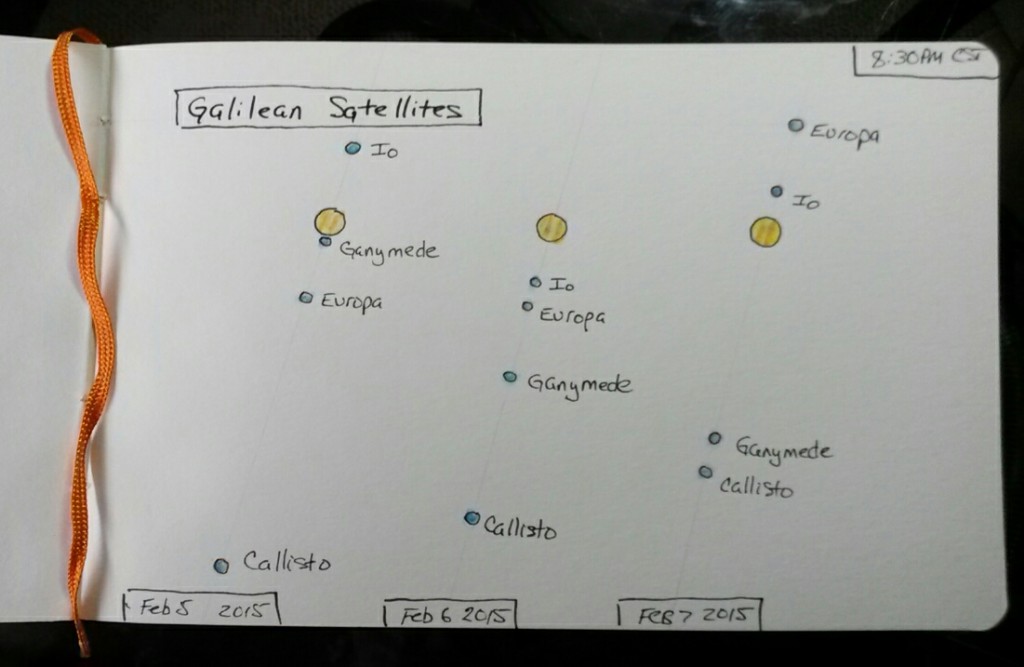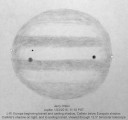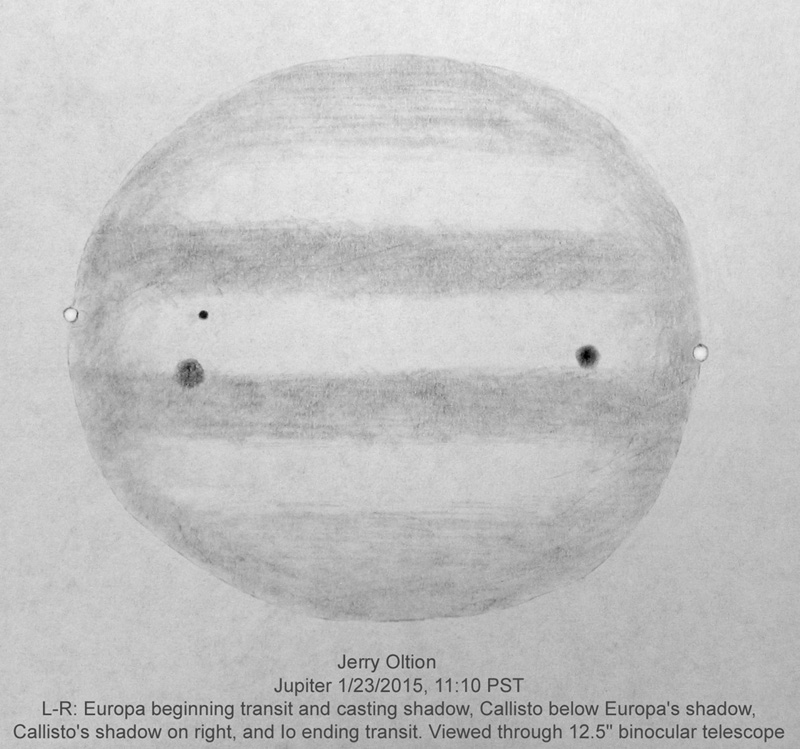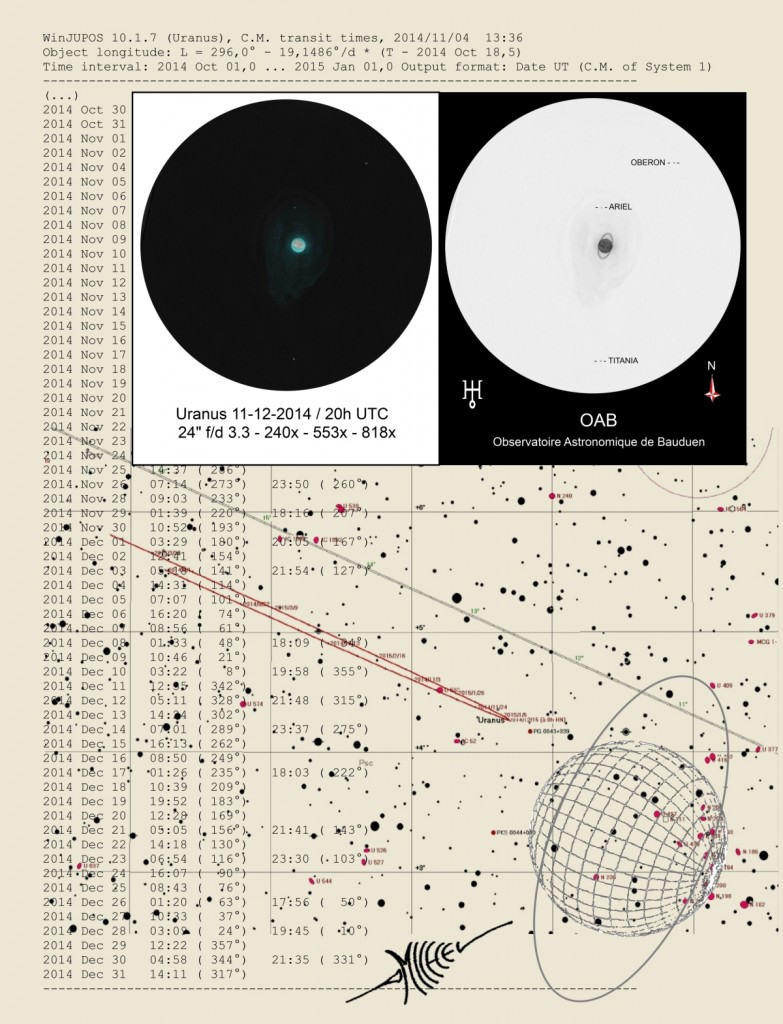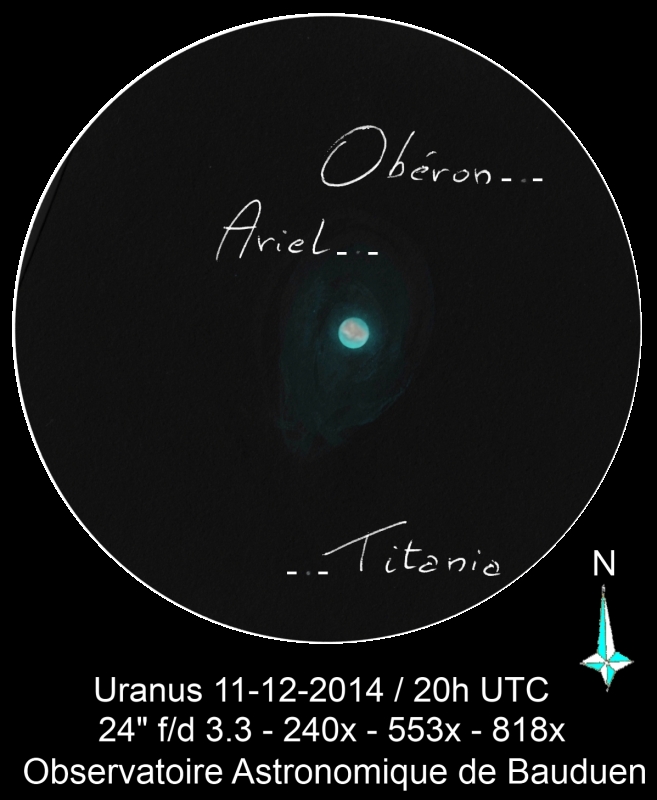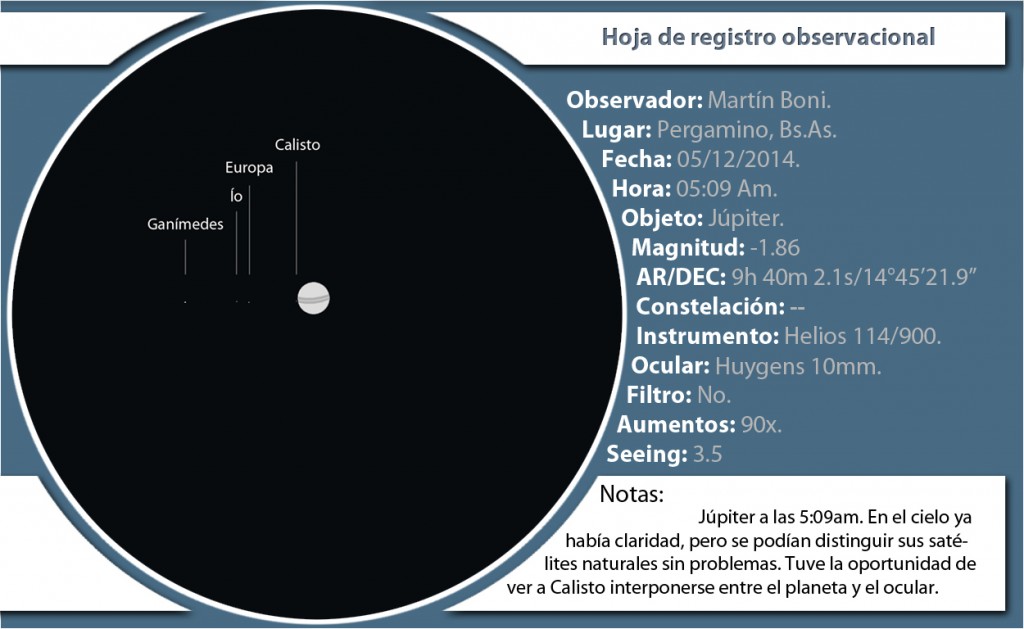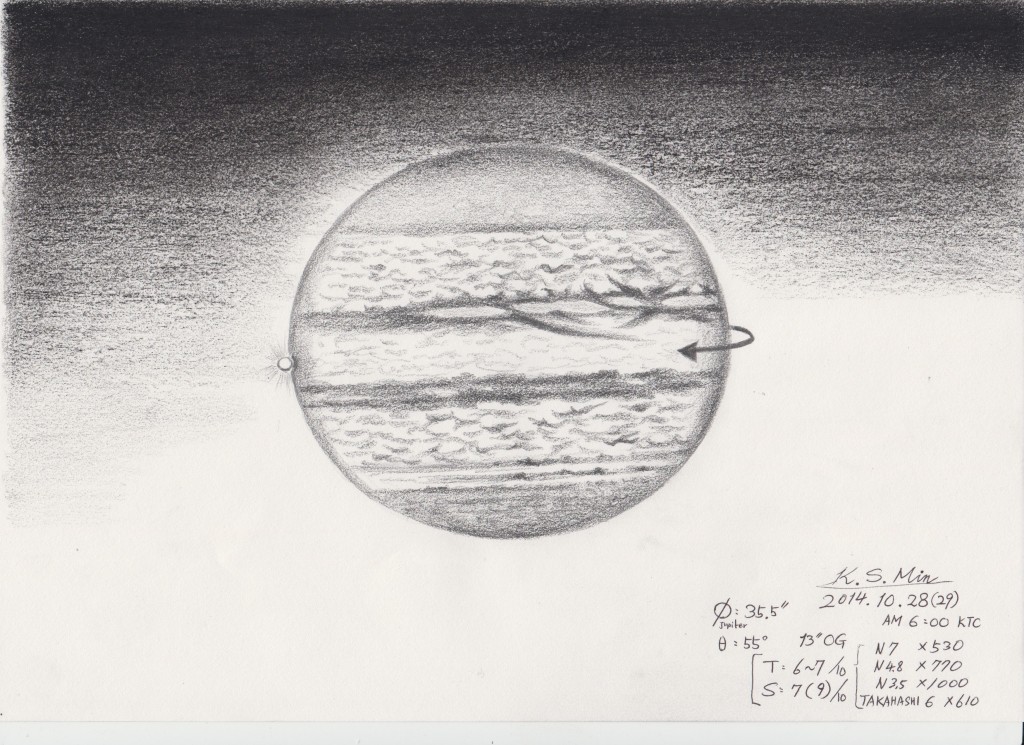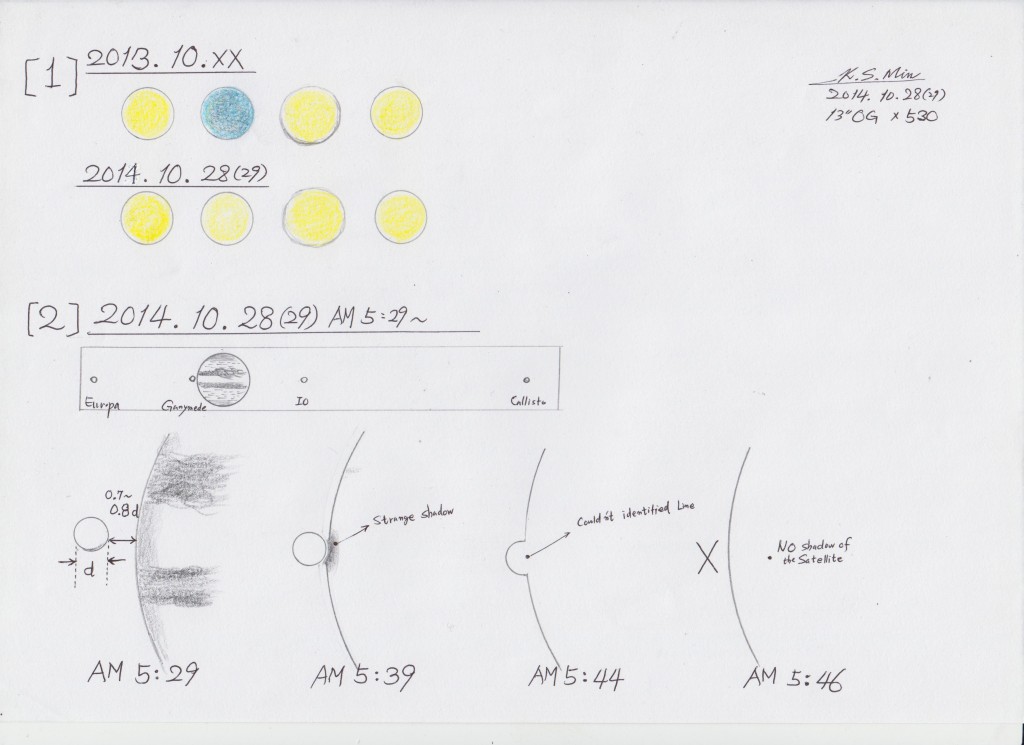
Hi,
This sketch of my favorite planet of the solar system, that day their moons aligned, the great red spot and below this, the shadow of Europe, the picture was very rewarding and enjoyed meeting observation, but since the city only allows this type comments, try to have a place for these events really impressive. The original sketch was reduced and adjusted as is the eyepiece.
Best regards.
Roberto.
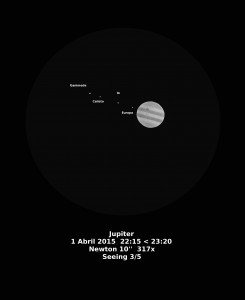
Object name: Jupiter
Object type: Planet
Location: Madrid City ( Spain )
Date: 1 April 2015
Hour: 22:15 < 23:20
Media: Graphite pencil, processed and inverted gimp 2.8
Optical equipment: Dobsonian telescope 10'' F/5 Eye piece Ethos 8mm + Barlow 2x
Magnification 317x
Sky conditions: Seeing 3/5.
http://dibujodelcielonocturno.blogspot.com.es/

